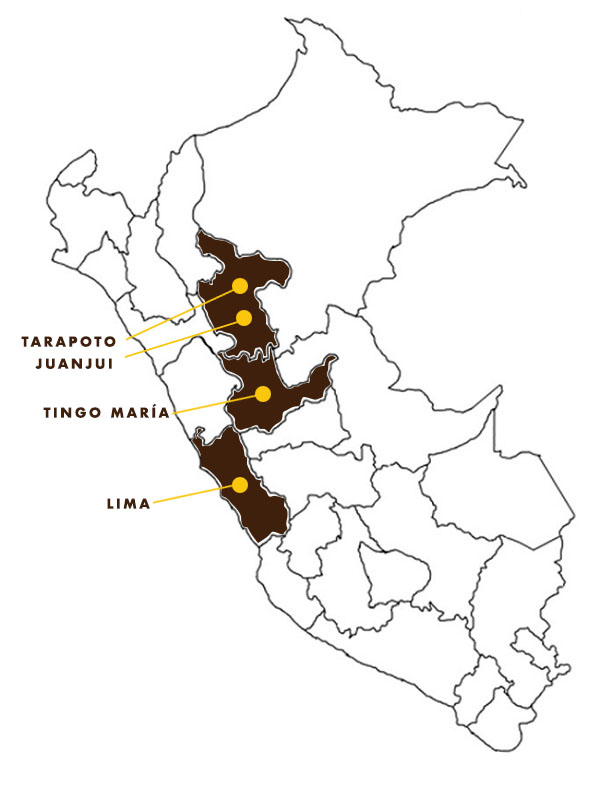We offer cocoa beans and derivatives
Cocoa is a fruit of tropical origin that comes from the cocoa tree, whose scientific name is Theobroma cacao, which in Greek means "food of the gods".
Cocoa tree and varieties.
The cocoa tree has the following characteristics:
- It has a height of 4 to 8 m
- Its fruits are elongated berries, containing 30 to 40 reddish-brown seeds on the outside, covered with a sweet and edible white pulp.
- Its natural habitat is tropical humid forests with a warm climate.
- It takes between 5/6 years to bear its first fruits, and 6 months to mature.
The level of cocoa production depends on the environmental conditions of the area where it is grown. It needs the specific temperature and humidity to be able to grow and often requires other leafy or “shade” trees to protect it from the sun. They are the so-called “mother of cocoa” trees.
Environmental conditions are key for the production and development of cocoa. Between 300 and 600 seeds are needed to make 1 kg of cocoa.
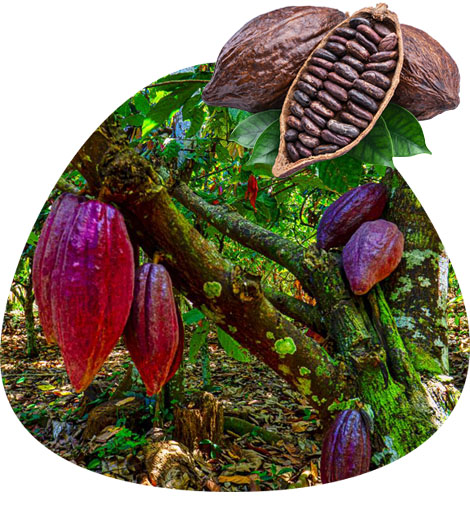
There are many varieties of cocoa, but the most common are
the criollo, the foreigner and the trinitarian cocoa
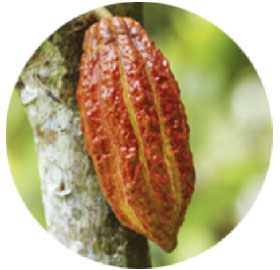
It is the variety of cocoa consumed by the Mayans. It is considered the best tasting and has a very particular aroma.
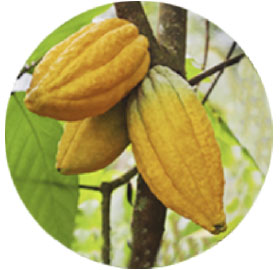
It is a wild variety of Creole cocoa originating from the Amazon jungle. It has a more bitter taste and is the most common cocoa: 90% of the cocoa currently grown in the world belongs to this variety.
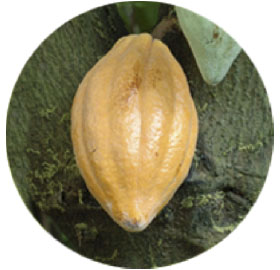
It is the result of cross-fertilization between Criollo and Forastero variety trees that occurred spontaneously on the island of Trinidad around the year 1730. It combines part of the typical flavor of Criollo cocoa with the resistance of the Forastero.
Benefits
It is very rich in antioxidants, surpassing green tea and red wine, due to its high content of vitamin C, fiber and serotonin, which makes it an excellent ally to prevent cardiovascular and cerebrovascular diseases, liver, gastric and colon cancer.
Collection and transformation.
Cocoa harvest.
1. The harvest begins when the cob is ripe. Although the cocoa harvest takes place throughout the year, in some areas it is concentrated in a few months, such as West Africa where the main harvest takes place between September and February.

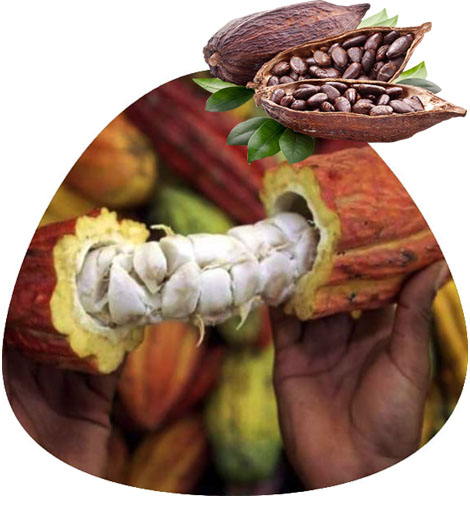
2. As soon as the cobs ripen, the so-called "tumbadores" cut the stalk of the cob with a sickle or with a special knife fixed on a pole. The seeds are extracted and placed on a base of banana leaves. This initiates the fermentation process, which lasts between 3 and 7 days (9).
3. During fermentation, heat is released as the pulp disintegrates. The increase in temperature produces important changes in the seed or cocoa bean:
- Turns from purple to light brown
- Reduces the original bitter taste
- The precursor flavors of chocolate are born

4. In drying, the seeds are spread out in the sun for 7-10 days; its aroma is concentrated
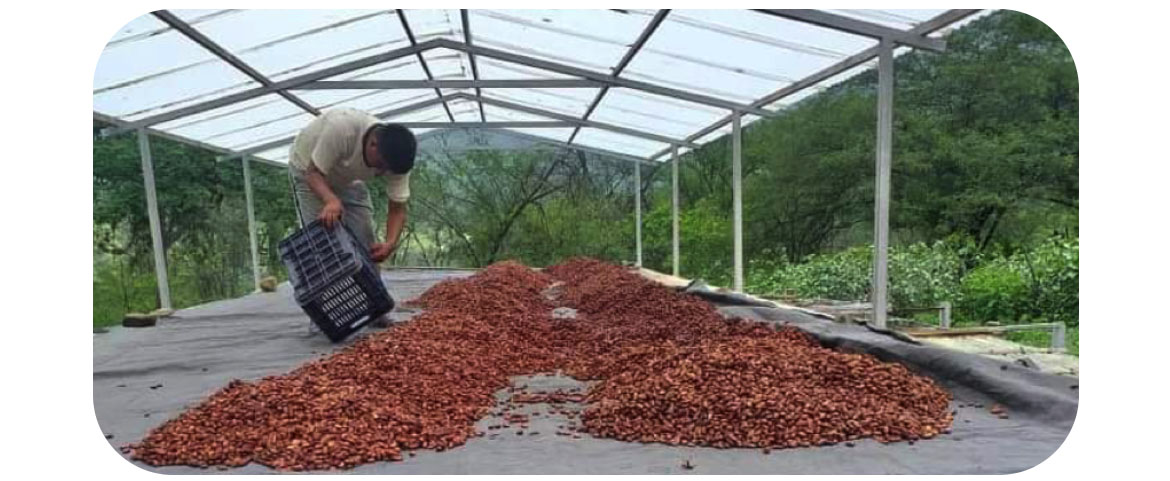
Our cocoa is produced in several favorable points such as:
Peru Department of San Martin
Climate
San Martín is one of the warmest regions in Peru and has an average daily maximum temperature of 33 degrees Celsius. It's hot all year. A rainy day is a day on which at least 0.1 mm of precipitation (=0.1 liters) falls per square meter. The region has one of the most favorable climates for the production of cocoa of the highest quality with good aroma and intense flavor.
Sun hours per day

Rainy days per month
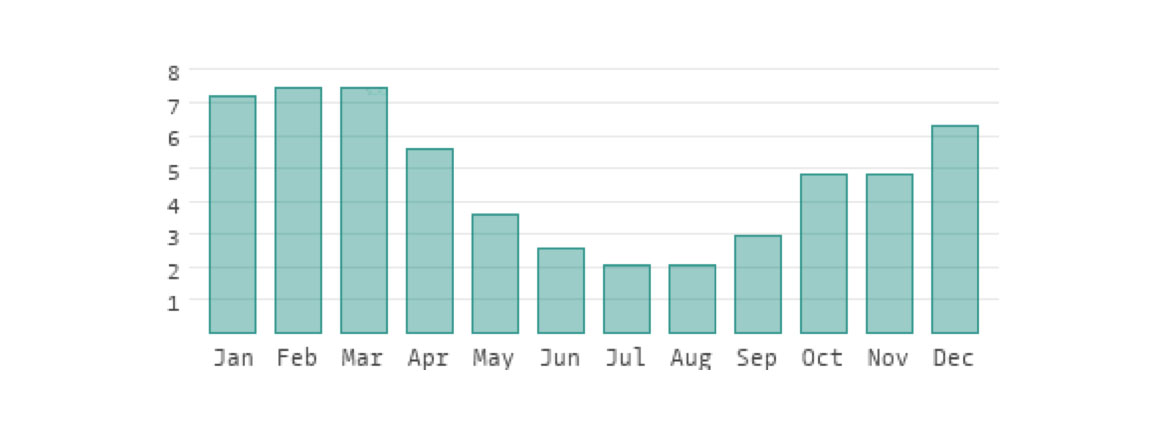
Main collection points
4 collection offices nationwide in the main coffee and cocoa growing areas: Juanjui, Tarapoto, Tingo María, Lima
Contact us